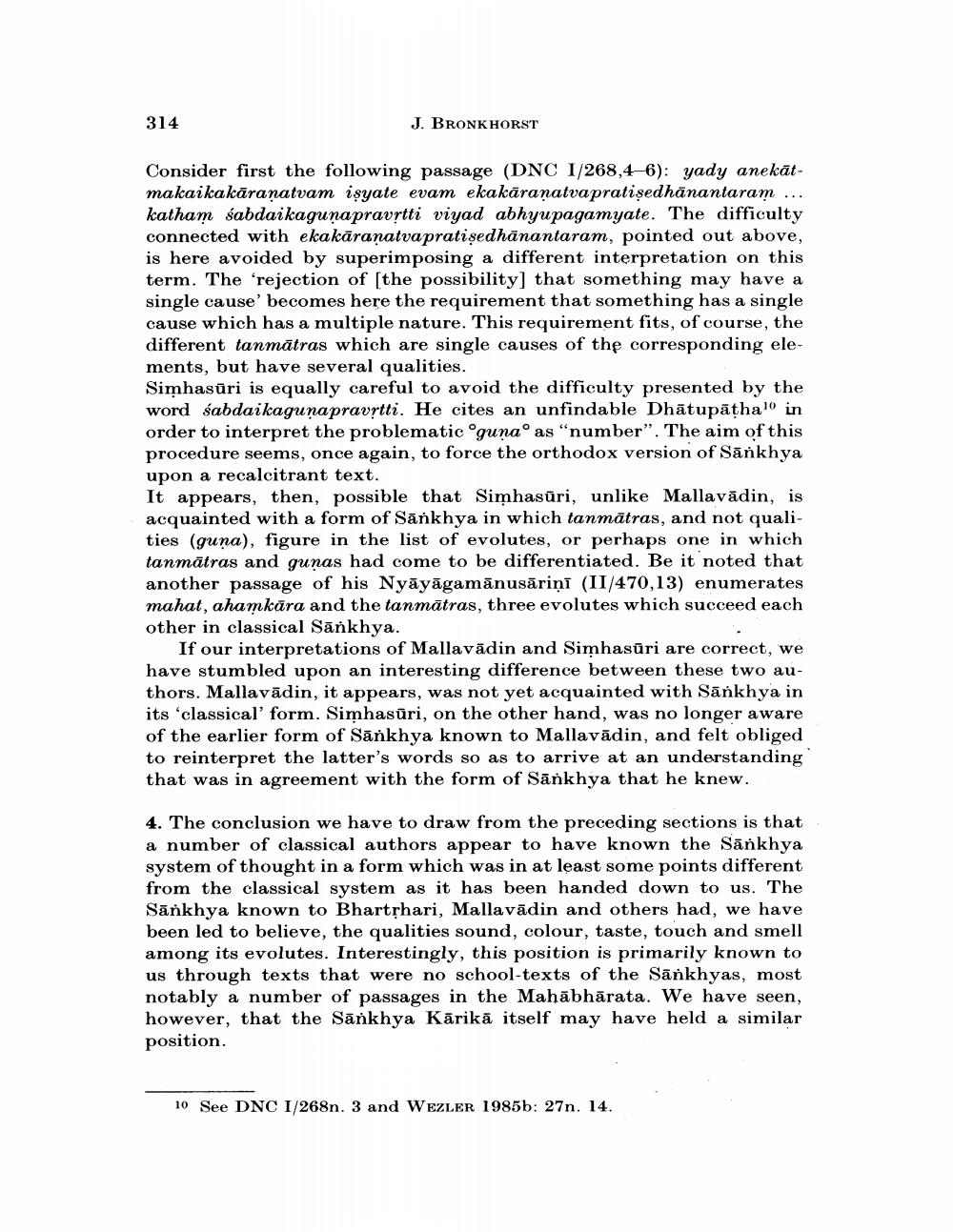________________
314
J. BRONKHORST
Consider first the following passage (DNC I/268,4-6): yady anekātmakaikakāraṇatvam isyate evam ekakāranatvapratisedhānantaram ... katham sabdaikaguņapravrtti viyad abhyu pagamyate. The difficulty connected with ekakāranatva pratiședhānantaram, pointed out above, is here avoided by superimposing a different interpretation on this term. The "rejection of [the possibility) that something may have a single cause' becomes here the requirement that something has a single cause which has a multiple nature. This requirement fits, of course, the different tanmātras which are single causes of the corresponding elements, but have several qualities. Simhasūri is equally careful to avoid the difficulty presented by the word sabdaikagunapravrtti. He cites an unfindable Dhātupāthalo in order to interpret the problematic gunao as "number". The aim of this procedure seems, once again, to force the orthodox version of Sankhya upon a recalcitrant text. It appears, then, possible that Simhasūri, unlike Mallavādin, is acquainted with a form of Sānkhya in which tanmātras, and not qualities (guna), figure in the list of evolutes, or perhaps one in which tanmātras and gunas had come to be differentiated. Be it noted that another passage of his Nyāyāgamānusāriņi (11/470,13) enumerates mahat, ahamkāra and the tanmātras, three evolutes which succeed each other in classical Sānkhya.
If our interpretations of Mallavādin and Simhasūri are correct, we have stumbled upon an interesting difference between these two authors. Mallavādin, it appears, was not yet acquainted with Sānkhya in its 'classical' form. Simhasūri, on the other hand, was no longer aware of the earlier form of Sānkhya known to Mallavādin, and felt obliged to reinterpret the latter's words so as to arrive at an understanding that was in agreement with the form of Sankhya that he knew.
4. The conclusion we have to draw from the preceding sections is that a number of classical authors appear to have known the Sankhya system of thought in a form which was in at least some points different from the classical system as it has been handed down to us. The Sānkhya known to Bhartrhari, Mallavādin and others had, we have been led to believe, the qualities sound, colour, taste, touch and smell among its evolutes. Interestingly, this position is primarily known to us through texts that were no school-texts of the Sānkhyas, most notably a number of passages in the Mahabharata. We have seen, however, that the Sānkhya Kārikā itself may have held a similar position.
10 See DNC 1/268n. 3 and WEZLER 1985b: 27n. 14.




